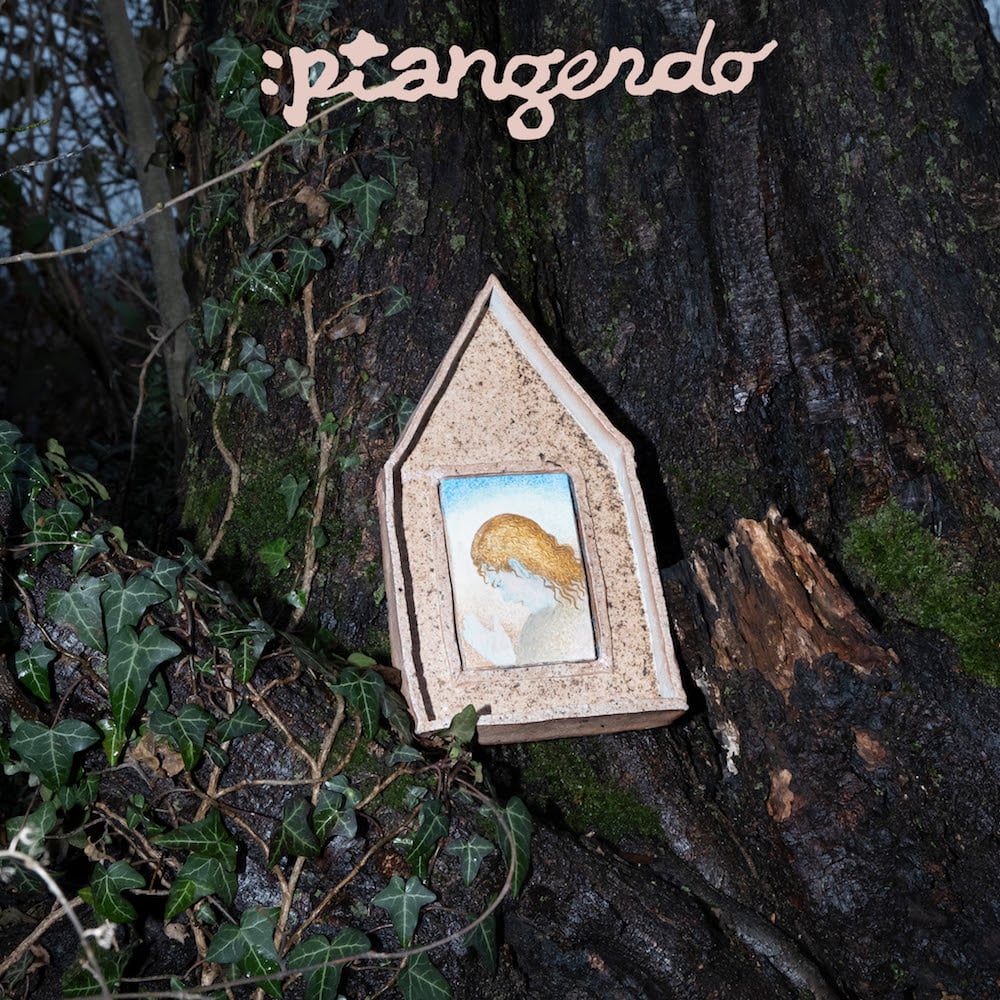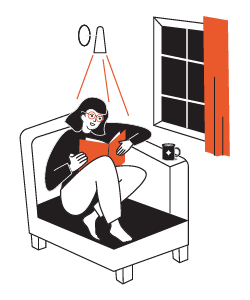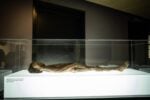Michele Cesaratto – Piangendo

Acappella è lieta di annunciare ‘Piangendo’ di Michele Cesaratto, seconda mostra personale in galleria dell’artista friulano.
Comunicato stampa
Acappella è lieta di annunciare ‘Piangendo’ di Michele Cesaratto, seconda mostra personale in galleria dell'artista friulano.
Il Tagliamento, in dialetto Tiliment, è il maggiore fiume del Friuli Venezia Giulia ed è considerato l’unico dell’arco alpino a conservare l’originaria morfologia a canali intrecciati. Nel suo medio corso il suo letto può raggiungere la larghezza di un chilometro senza considerare i boschi e i campi sulle sponde. Le esperienze di formazione di Michele Cesaratto, (1998), prima che nelle Accademie Italiane, passano tutte attraverso la corrente del Tagliamento, tangente al borgo di Gradisca di Spilimbergo (PN), paese dove è cresciuto e che con il tempo è diventato luogo di ritrovo, di raccolta, in armonia tra il passato rurale e la natura circostante. In questo contesto, antico, ma indissolubilmente legato alla sua generazione, si appassiona di arte, cultura orientale, studio delle piante, falegnameria, musica e illustrazione. A poche centinaia di metri dalla piccola piazza del paese, luogo dove ha sede il suo laboratorio, è possibile entrare in una piccola strada che porta dritta al greto del Tagliamento.
Seguendo un percorso che più che di Grand Tour sa di artista del tre-quattrocento Italiano, Michele Cesaratto sceglie prima l’Accademia di Firenze per poi concludere gli studi del quinquennio a Venezia. In queste due città traccia, oltre al Friuli storico, la base portante delle sue successive sperimentazioni, in un mondo sospeso tra la contemporaneità, il Trecento e il Quattrocento europeo e i tre millenni di civiltà cinese. L’influenza dell’antico, da primordiale, negli anni inizia a riguardare non solo gli aspetti formali e tecnici dell'immagine, bensì si estende all'approccio spirituale della pittura presa in riferimento da alcuni artisti di quei tempi.
Passando da Fra Angelico, Pollaiolo, Pisanello, ed i primitivi del XIII° e XIV° secolo, emerge netta una caratteristica comune: nonostante l'eleganza e la raffinatezza delle loro opere, spesso a sfondo sacro, emerge sempre quella stessa dimensione ingenua che Cesaratto manifesta nella "coziness" del suo studiolo a Fagagna (UD), tra una bevuta di tè cinese e un ascolto dei FSK Satellite davanti al cavalletto. Il suo "grindare" arte ed altre manifestazioni che nella sua leggerezza di vita, viva, nel suo tocco genuino e studiato del pennello, vengono trasferite nella sua tavola, attualissima pittura, tavola ingenua, in-genui, generata da sé e perciò spontanea, qualità sopraffina dei pittori secondo la trattatistica cinese a partire dall’età Tang 唐 (618-907). Così, attraverso la memoria, il colore e l’emozione vissuta nel paesaggio, Cesaratto ritorna alla sua terra, o Oltremanica, o verso la Cina o al boschetto di bambù presso il suo paese natale in Friuli, senza alcuna pretesa d’essere pari ai maestri antichi, ma appunto assimilando nella tecnica e nello spirito senza tempo la loro medesima potenza figurativa e il loro mistero, che ancora oggi ci permette di apprezzarli.
Nella pittura di Michele Cesaratto, la natura è incarnata e dipinta sulla tavola ottenuta dai tronchi da lui stesso recuperati e tagliati. Tramite un processo di assimilazione, osservazione, studio e coltivazione effettiva delle piante, il pigmento trasferito nella sua tavolozza anch’esso ottenuto attraverso studi empirici di secoli e secoli, successi e fallimenti nella lavorazione delle terre. Dalla natura torna al quadro per rappresentare delle scene spontanee, originate dalla memoria e dal sentimento dell’artista, al pari delle scelte di rappresentazione dei maestri cinesi tra l’età Song (960-1279) e Yuan (1271-1368), un paesaggio, un momento trascorso con gli amici, come nel Rotolo dei Sei Gentiluomini (1345) del maestro di età Yuan, Ni Zan (倪瓚 1301-1374).
Come minuti oggetti di artigianato di pregio, le rappresentazioni presenti nelle tavole di Michele Cesaratto seguono un canone comune tra paesaggio e soggetto. Ciò che spicca è proprio la loro commistione, dove il paesaggio non è mero scenario, ma orizzonte delle sue emozioni, del passare del tempo, e testimone di un mondo globale e globalizzato, in cui il repertorio di qualsiasi cultura o artista di facile accesso, e apre così le porte a continui, incontrollati rimandi iconografici e tematici, contenutistici e formativi. Tutto può essere riferimento, in una tale vastità, tanto da rendere davvero complesso tracciare il tutto, un compito filologicamente quasi impossibile, probabilmente anche per l’artista stesso.
Raccolta la sua eredità è difficile scindere la sua arte dalle radici della sua terra così come è difficile non pensare per un momento ai maestri che l’hanno ispirato, ma se lo facciamo non abbiamo che delle scene di vita olistiche di fronte a noi, chiuse nel mistero stesso della loro creazione priva di sovrastrutture congenite. Rispetto ai tempi moderni, si può essere certi che con Piangendo, seconda mostra personale presso la galleria Acappella di Napoli, Michele Cesaratto dà spazio a quel mistero, a quella maturità artistica di un pittore anacronistico ma a suo modo parte di questa era neo-medioevale, esponente contemporaneo di uno scambio che attraverso la rete internet raccoglie una generazione, la nostra, permeata di mistero e oscurità da sciogliere.
Michele Cesaratto, un giovane artigiano un artista attento, cauto, che va tutelato e protetto, lasciando la sua pittura traspirare del marcio vivo e fertile del nostro tempo.
_______
The Tagliamento, known in Friulian as Tiliment, is the longest river in Friuli Venezia Giulia and is considered the only one in the Alpine region to maintain its original braided channel morphology. In its middle course, its bed can reach a width of up to one kilometer, not including the forests and fields along its banks. Michele Cesaratto’s formative experiences (1998), before attending the Italian Academies, all flow through the current of the Tagliamento, skirting the village of Gradisca di Spilimbergo (PN), where he grew up and which, over time, has become a gathering place, in harmony with its rural past and the surrounding nature.
In this ancient context, yet inseparably linked to his generation, he developed a passion for art, Eastern culture, plant studies, woodworking, music, and illustration. Just a few hundred meters from the village square, where his workshop is located, one can enter a narrow street leading straight to the riverbed of the Tagliamento.
Following a path that seems more like an Italian 14th-15th-century artist’s journey than a typical Grand Tour, Michele Cesaratto first chose the Academy of Florence, later completing his five-year studies in Venice. In these two cities, alongside historic Friuli, he laid the foundation for his subsequent experiments, in a world suspended between contemporaneity, the 14th- and 15th-century European Renaissance, and three millennia of Chinese civilization. Over the years, the influence of the ancient began to affect not only the formal and technical aspects of the image, but also the spiritual approach to painting taken as reference by certain artists of that time.
From Fra Angelico, Pollaiolo, Pisanello, to the 13th and 14th-century primitives, one characteristic is strikingly clear: despite the elegance and refinement of their works, often with sacred backgrounds, there always emerges the same naive dimension that Cesaratto expresses in the “coziness” of his studio in Fagagna (UD), where he enjoys a cup of Chinese tea while listening to FSK Satellite in front of the easel. His “grinding” of art and other manifestations, in the lightness of his life, transfer into his painting with a genuine, carefully studied brushstroke, bringing his fresh and very contemporary art onto the canvas: an ingenuous table, in-genui, self-generated and thus spontaneous, a supreme quality according to Chinese treatises since the Tang Dynasty (618-907).
Thus, through memory, color, and the emotion experienced in the landscape, Cesaratto returns to his land, or to the other side of the world, or towards China, or to the bamboo grove near his native village in Friuli, with no pretension to match the ancient masters, but rather absorbing their figurative power and timeless spirit, which still allows us to appreciate them today.
In Michele Cesaratto’s painting, nature is embodied and painted on panels made from trunks that he himself has retrieved and cut. Through a process of assimilation, observation, study, and actual cultivation of plants, the pigment transferred to his palette is also obtained through centuries of empirical study, successes, and failures in the processing of earth. From nature, it returns to the canvas to represent spontaneous scenes, originating from the artist's memory and feeling, much like the representation choices of Chinese masters between the Song (960-1279) and Yuan (1271-1368) periods: a landscape, a moment spent with friends, as in the Scroll of the Six Gentlemen (1345) by the Yuan-era master Ni Zan (1301–1374).
Like small, precious handcrafted objects, the representations in Michele Cesaratto’s panels follow a common canon between landscape and subject. What stands out is the fusion of the two, where the landscape is not merely a backdrop but the horizon of his emotions, the passage of time, and a witness to a globalized world. In this vastness, everything can become a reference: from any culture or artist that’s easily accessible, opening the doors to a whirlwind of uncontrollable iconographic and thematic references, content and forms. Everything can be a reference in such a broad scope, making it truly complex to trace the whole—a task that, in its filological richness, may even be impossible, probably even for the artist himself.
Once we collect his legacy, it becomes difficult to separate his art from the roots of his land, just as it is hard to stop for a moment and not think of the masters who inspired him. But if we do, all we’re left with are holistic life scenes before us, closed within the mystery of their creation, free from innate superstructures. Compared to modern times, we can be sure that with Piangendo, his second solo exhibition at the Acappella Gallery in Naples, Michele Cesaratto makes space for that mystery, that artistic maturity of an anachronistic painter, but in his own way part of this neo-medieval era. He is a contemporary representative of an exchange that, through the internet, gathers a generation—our generation—permeated by mystery and darkness that is waiting to be unraveled.
Michele Cesaratto, a young craftsman and artist, is attentive and cautious, one who should be protected and cherished, letting his painting breathe the fertile rot of our time.
_________
In occasione della mostra sarà presentata una monografia dell'artista, con disegni e opere di Michele Cesaratto, fotografie di Arianna Mattietti, grafica di Alessia Pagotto e testi di Roberto Mezzaroma.



